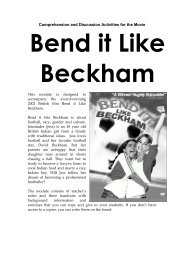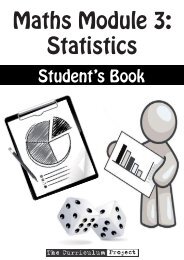General English Pre-Intermediate Modules 1-4 Teacher's Guide (2.1 ...
General English Pre-Intermediate Modules 1-4 Teacher's Guide (2.1 ...
General English Pre-Intermediate Modules 1-4 Teacher's Guide (2.1 ...
Create successful ePaper yourself
Turn your PDF publications into a flip-book with our unique Google optimized e-Paper software.
Some terms used in the <strong>Teacher's</strong> Book<br />
Although we have tried to reduce the amount of complicated language, there are a few terms we’ve<br />
used a lot in this Teacher’s <strong>Guide</strong>:<br />
Elicit means to get students to provide answers,<br />
opinions or ideas (instead of the teacher giving these<br />
to the students).<br />
pum;&nfvk+ydKifyGJ<br />
What does<br />
‘debate’ mean’<br />
Brainstorm is similar to elicit. Students think of as<br />
much as possible about a topic, or as many examples<br />
as possible of something, or a list of items.<br />
10 countries in<br />
Southeast Asia<br />
What do you know<br />
about ASEAN<br />
It’s like a formal<br />
argument<br />
Meetings<br />
Association of<br />
South East Asian<br />
Nations<br />
To argue<br />
<strong>Pre</strong>-teach means to introduce new vocabulary before<br />
students read or listen to a new text. You can do this<br />
by providing background information, translation, or<br />
eliciting definitions from the students.<br />
Demonstrate means to perform a new task in front<br />
of the class before getting students to do it. This way<br />
students have a model to base their tasks on – they<br />
can see what they are supposed to do.<br />
You can do this as a class, writing students’ ideas on<br />
the board as they say them. Alternatively, put students<br />
into groups, and encourage groups to compete to list<br />
the most points or items.<br />
A variation is a Group Brainstorm Competition.<br />
Divide the class into groups, who list items within<br />
a category, e.g. types of transport or ways to learn<br />
vocabulary. Give them a time limit. The group with<br />
the most items on their list wins.<br />
Using students' first language (L1)<br />
Sometimes you might need to use L1 to:<br />
• give detailed instructions<br />
• clarify and check understanding of key ideas or language<br />
• discuss complex ideas<br />
However, as the objective is for students to improve their language skills, <strong>English</strong> should be used in the<br />
classroom as much as possible. It is best if you try to explain something in <strong>English</strong> first, and only use L1 if<br />
the meaning is still not clear.<br />
In group and pairwork activities, students should normally use <strong>English</strong>. For some activities, the teacher’s<br />
instructions in this book are to make sure students use only <strong>English</strong>. For a few activities, where the ideas<br />
are more important than the language practice, we have suggested that students use L1.<br />
Introduction<br />
VII


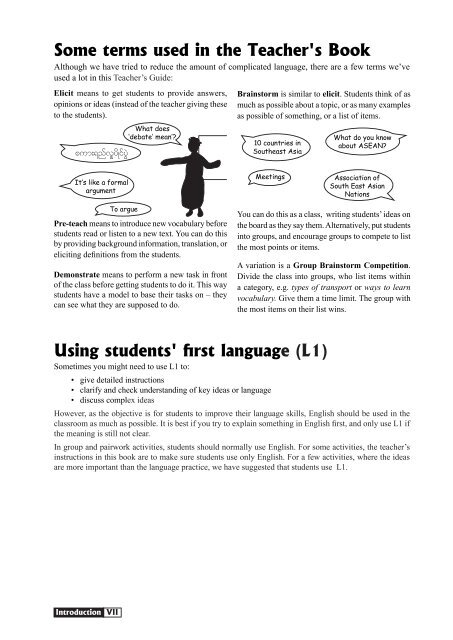
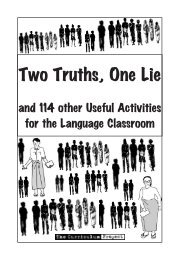
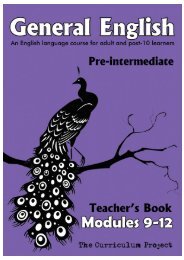


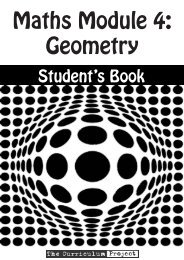

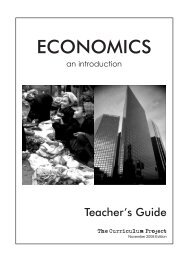
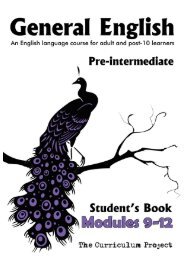

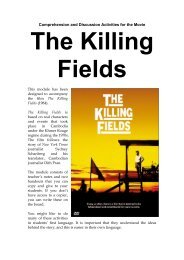
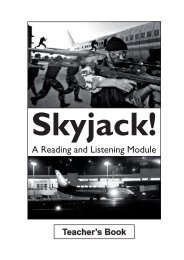
![[Eng] Nov 2012 DRAFT - The Curriculum Project](https://img.yumpu.com/45590859/1/184x260/eng-nov-2012-draft-the-curriculum-project.jpg?quality=85)
